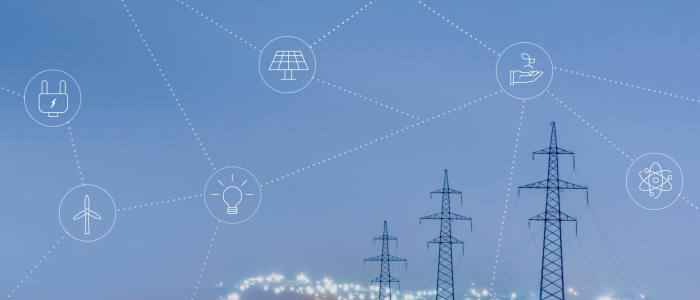
Mirroring caps on gas and heat prices (gas and heat price brake), the German Bundestag passed an electricity price brake on 15 December 2022 to further shield households and businesses from rising energy prices. The following aims to answer key questions about these measures:
What are the legal regulations behind the electricity price brake?
While the relief for gas and heat will be a two-step process, 1) emergency aid in December in the form of the Gas and Heat Emergency Aid Act (Erdgas-Wärme-Soforthilfegesetz, “EWSG”) and 2) the Gas and Heat Price Brake Act (Erdgas-Wärme-Preisbremsengesetz, “EWPBG”), which will apply from March/January 2023, the relief for electricity is to be granted in a single step. The Electricity Price Brake Act (Strompreisbremsegesetz, “StromPBG”), which comes into force in January 2023, will provide the legislative basis. The relief will apply for the entire year 2023 at least, with the option to extend that period through 30 April 2024.
For companies with especially high electricity consumption, the regulations will be based on the “State aid Temporary Crisis Framework to support the economy in the context of Russia’s invasion of Ukraine” of 28 October 2022 – in particular with regard to the maximum limits on state aid.
Relief will take the form of a basic price quota for electricity consumption, with each withdrawal point being allocated a certain amount of electricity at a reduced price. Withdrawal points with a consumption of up to 30,000 kWh will receive a quota capped at 40 ct/kWh for 80% of their previous consumption, while those with a consumption of over 30,000 kWh will receive a quota capped at 13 ct/kWh for 70% of their previous consumption. Relief payments for January and February 2023 will be made in March 2023 to give electricity providers sufficient time to implement the brake.
Who will benefit from these measures?
The relief will benefit all end consumers – both natural and legal persons – that are supplied with electricity at a withdrawal point either for their own or downstream third-party consumption or, in certain cases, withdraw the electricity without being supplied by a provider. Specific eligibility depends on the amount of electricity consumed. For households and small businesses, which typically consume less than 30,000 kWh a year, the price of electricity will be capped at 40 ct/kWh, whereas medium to large businesses whose previous annual consumption generally exceeds this amount will not be required to pay more than 13 ct/kWh.
How will the price brake work?
Electricity providers will deduct the relevant amount of relief from their end consumers’ electricity bill. If consumers withdraw the electricity without being supplied by a provider, the transmission system operator responsible for the control area must grant the relief. Consumers will not be required to take any action.
How is the relief calculated?
The monthly relief is calculated by multiplying the basic quota by the difference between a customer’s individual, contractual weighted average kWh price for the overall month and the reference energy price. The reference energy price is the cap described above: 40 ct/kWh for withdrawal points with a consumption of up to 30,000 kWh of electricity and 13 ct/kWh for those that exceed this amount. This reduced rate is granted for a limited basic quota – either 80% or 70% of previous annual consumption – depending on whether the reference energy price of 40 ct/kWh or 13 ct/kWh applies.
Simply put, households and small businesses will pay 40 ct/kWh for 80% of their annual electricity consumption – based on previous years – and the contractually agreed price for the remaining 20%, which will ultimately reduce consumers’ payments. Larger businesses, on the other hand, will pay 13 ct/kWh for 70% of their previous annual consumption and the contractually agreed price for the remaining 30%.
What framework conditions must be observed?
Amounts paid can be recovered if it transpires that an end consumer was not eligible to receive them.
However, the StromPBG itself contains a series of restrictions. For reasons relating to state aid law, no support may be granted if EU sanctions have been imposed on the company or its affiliated persons, organisations or institutions. The receipt of relief of more than EUR 2 million is linked to a job retention obligation. After much wrangling, the Bundestag finally also passed a limited ban on bonuses and dividends that will only apply once a relief amount of EUR 25 million has actually been claimed. Above this threshold, variable compensation components and increases in the fixed salaries paid to members of corporate bodies on or before 31 December 2023 will only be able to be paid if they were agreed before 1 December 2022. If a relief amount in excess of EUR 50 million is utilised, the payment of variable compensation components and increases in fixed salaries paid to corporate bodies as well as the distribution of dividends is generally excluded until after 31 December 2023.
What are the maximum relief limits?
Finally, it should be noted that for reasons relating to EU state aid law, absolute and relative maximum relief limits will apply under the StromPBG that must not be exceeded overall. The maximum permissible relief amount includes all state aid for additional costs due to the exceptional increase in energy prices – and therefore also includes relief granted under the gas and heat price brake, for example. The maximum limit is EUR 4 million (absolute amount) for regular companies, or 50% of crisis-related additional energy costs. End consumers who are determined by a (federal) audit authority yet to be specified (likely the Federal Office for Economic Affairs and Export Control (Bundesamt für Wirtschaft und Ausfuhrkontrolle, “BAFA”)) to be particularly affected by high energy prices can receive support of up to EUR 100 million or 40% of crisis-related additional energy costs. If the audit authority additionally determines that an end consumer is energy intensive, other arrangements apply. In certain cases, support can total EUR 150 million or 80% of the crisis-related additional energy costs. There are various obligations to cooperate with and notify suppliers and the audit authority that must be observed; non-adherence to these obligations is subject to fine.
How will the electricity price brake be financed?
The costs of the electricity price brake are to be financed by the Economic Stabilisation Fund (ESF) as well by siphoning off windfall or excessive profits made on electricity markets. Excessive profits will be siphoned off as from 1 December 2022 until 30 June 2023, although this could be extended, by ordinance, until 30 April 2024 at the latest. If the threshold of 1 MW (installed capacity) is exceeded, profits from plants that use renewable energy sources to generate electricity are siphoned off, as are profits from waste incineration plants, nuclear power plants, lignite-fired power plants and plants that recycle refinery residues. For example, in addition to certain storage facilities, profits from hard coal and natural gas power plants as well as biomethane plants will not be siphoned off.
The surplus revenues will generally be calculated on the basis of spot market prices or energy source-specific monthly market values for wind energy and solar installations, and allow for profits from hedges (on the futures market) and sales from specific installations (especially PPAs) to be taken into account. Technology-specific revenue caps will apply, with safety margins being introduced to protect plant operators against undue hardship. 90% of the difference between the revenue cap and the calculated surplus revenue amount will then be siphoned off, leaving 10% with the producer to create an incentive for effective market behaviour.
What legal objections are there to the StromPBG?
From a legal point of view, the current structure of the StromPBG – and especially the mechanism for siphoning off surplus revenues – harbours the risk of violating both EU law and the GG. There are various potential scenarios that will likely prove hard to reconcile with these laws. For new contracts at existing plants, in particular, the “surplus revenue” will from 1 November 2022 onwards be calculated based on a fictitious spot benchmark revenue, which is in turn determined using the average spot benchmark price and a cap. This means that especially operators with PPAs will find revenues being siphoned off that they never actually generated and that become ever higher as the prices on the spot market increase. Any mechanism for siphoning off revenues must however meet the requirements of EU law, in particular the EU Emergency Regulation (Regulation (EU) 2022/1854), which specifies a cap for “market revenues” that applies to “realised market revenues” only. The Federal Constitutional Court has also ruled that state levies may not amount to confiscation measures, as this would infringe the fundamental right to property under Article 14(1) GG. The mechanism for siphoning off surplus revenues could therefore also be unconstitutional in some cases.
In addition to the objections to such a provision under EU and German constitutional law, plant operators using PPAs would increasingly have to choose a price mechanism that is tied to the spot market price. This would harm green PPAs in particular, as they are unable to offer electricity customers long-term price stability. Such a mechanism could also distort the European electricity market and would therefore have to be assessed in terms of Article 8(2), letter (d) EU Emergency Regulation as well.
Is additional official information available?
Further information on how the electricity price brake will work and be financed is available in German on the website of the Federal Ministry of Economics (see here, only available in German). The legislation is available here, only in German).
What changes to the Renewable Energy Sources Act (Erneuerbare-Energien-Gesetz, “EEG”) are set to enter into force together with the electricity price brake?
To accelerate the expansion of green electricity generation, a mechanism has been designed that will oblige property owners to tolerate power lines being laid between green electricity plants and network connection points. Project developers or plant operators will be required to pay owners a one-time payment of 5% of the market value of the protected strip used.
Feed-in tariffs are to be increased by around 20% for certain plants within the meaning of the EEG – an increase over and above the already-increased figures set out in the EEG 2023, before this has even come into force. The increase applies to both the maximum bids for plants participating in tenders and the values defined by law as well as the bonus for feeding in all the electricity generated.
Finally, a mechanism will be introduced for green electricity plants that will help the Federal Network Agency (Bundesnetzagentur) restrict tender volume to ensure that tenders at risk of undersubscription are still sufficiently competitive. This arrangement has been made necessary by European state aid rules intended to ensure that tenders’ subsidy levels are appropriate under state aid law.
